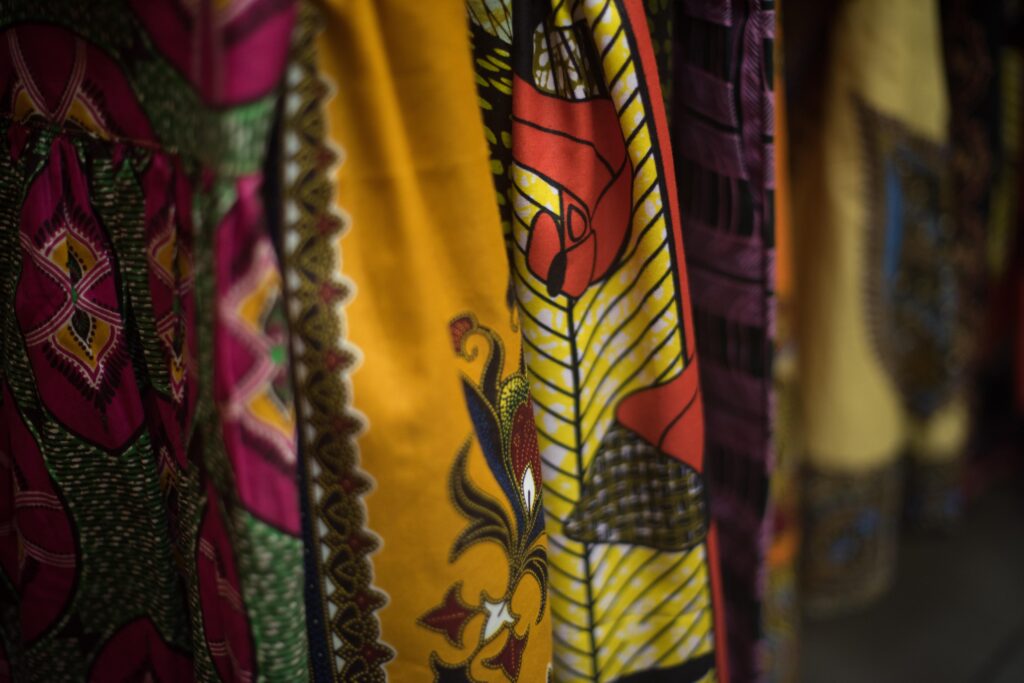What Is Marocain Fabric Produced?
Marocain fabric, a distinguished material in the textile industry, is renowned for its unique, crinkled texture reminiscent of crepe. Traditionally crafted from silk, this fabric offers a luxurious feel, though modern varieties also include synthetic materials like polyester for added durability and cost-effectiveness. The production of Marocain fabric involves a specialized twisting technique that imparts its characteristic texture. This fabric’s versatility makes it a favorite choice for both fashion designers and home decor, due to its elegant appearance and adaptability to various styles and designs.
What are the Features of Marocain Fabric?
Marocain fabric is celebrated for its distinctive, crinkled texture that resembles crepe, a unique feature that makes it a favorite among textile connoisseurs. Furthermore, it should not be overlooked that its durability is another key attribute, enhancing its longevity for users. The fabric also displays slight elasticity, offering comfort and flexibility in wear. Consequently, it is ideal for elegant garments such as dresses and blouses. Moreover, Marocain’s matte finish gives it a sophisticated appearance, perfect for formal wear. This matte quality also means it pairs well with various accessories. Additionally, it resists wrinkling, which makes it a popular choice for travel apparel. Therefore, consumers appreciate its practicality alongside its aesthetic appeal. The fabric is available in a vast array of colors and patterns. Hence, designers can utilize Marocain for diverse fashion and décor projects.
What are the Prices of Marocain Fabric?

The prices of Marocain fabric can vary greatly depending on several factors. Firstly, the type of material used significantly influences the cost. Silk Marocain is generally more expensive due to its natural quality. On the other hand, synthetic Marocain offers a more affordable option. Moreover, the complexity of the production process can affect the price. Thus, fabrics requiring more intricate manufacturing are priced higher. Additionally, the origin of the fabric plays a crucial role in its cost. Fabrics imported from renowned manufacturing countries may carry a premium. Consequently, this impacts the final retail price for consumers. Furthermore, the scale of purchase also affects pricing. Buying in bulk typically reduces the overall cost per unit. Therefore, large buyers like fashion houses benefit from lower prices. Additionally, seasonal demand can influence fabric prices. High demand periods may see increased prices due to market dynamics.
Bursa Marocain Fabric Manufacturing Companies
Bursa, particularly the Osmangazi district, is renowned for its expertise in Marocain fabric production. This region houses numerous esteemed companies, including Dört Renk Textile. Moreover, Dört Renk Textile stands out due to its commitment to quality and innovation. Consequently, it has gained recognition both domestically and internationally. Additionally, their use of advanced technology enables them to produce superior Marocain fabrics. Therefore, they consistently meet the high standards expected in global markets. Moreover, Dört Renk Textile offers a wide range of Marocain fabrics. This diversity caters to various customer needs and preferences. Additionally, the company’s focus on customer satisfaction drives its business success. Consequently, they maintain strong relationships with clients around the world. Furthermore, Dört Renk Textile is proactive in adopting sustainable practices. Thus, they contribute to environmental conservation while maintaining production efficiency. Hence, their commitment to sustainability also enhances their market appeal.
The Quality Products of Dört Renk Textile
Dört Renk Textile is renowned for its high-quality Marocain fabric products. This company, based in Bursa’s Osmangazi district, prioritizes excellence in every piece. Ayrıca, their textiles are known for durability and elegant designs. This makes them a preferred choice among fashion designers and decorators. Bu yüzden, Dört Renk Textile has built a strong reputation in the textile industry. They consistently deliver products that meet high standards of craftsmanship. Bu sebeple, the company enjoys a robust domestic and international customer base. Moreover, Dört Renk Textile offers a wide variety of fabric types. These include both natural silk and high-quality synthetics. Bu durumda, they cater to diverse market needs and preferences. Additionally, the company is committed to sustainability. Consequently, they employ environmentally friendly practices in their manufacturing processes. Böylece, Dört Renk Textile not only focuses on quality but also on eco-responsibility. This approach enhances their appeal to environmentally conscious consumers.
Conclusion
In conclusion, Marocain fabric stands as a paragon of versatility and elegance in the textile industry, thanks to its unique crepe-like texture, durability, and aesthetic appeal. Dört Renk Textile, a prominent manufacturer based in Bursa’s Osmangazi district, exemplifies the pinnacle of craftsmanship and innovation in producing Marocain fabrics. By blending traditional methods with modern technology and sustainable practices, Dört Renk Textile not only meets but often exceeds global standards. This dedication to quality and sustainability ensures that their fabrics are sought after by designers and consumers worldwide, reinforcing their position as a leader in the textile market. As the demand for both luxurious and practical fabrics continues to grow, Dört Renk Textile’s commitment to excellence and customer satisfaction remains a driving force behind their success and enduring reputation in the competitive world of textiles.


